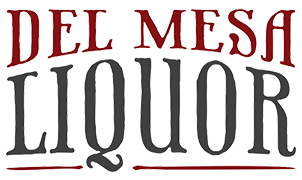If you have ever wandered the aisles of your local liquor store, you have likely noticed the wide variety of wines available, each with unique flavors, aromas, and colors. But have you ever stopped to consider the science behind winemaking? Understanding the fermentation process is crucial to appreciating the complexity of wine and the different factors that affect its taste.
Fermentation is the chemical process that transforms grape juice into wine, and it involves various microorganisms, including yeast and bacteria. The grape juice's temperature, acidity, and sugar content can affect the fermentation process and, ultimately, the wine's flavor.
In this blog, we will delve into the science of winemaking and explore how fermentation works.
We will also discuss the importance of different factors, such as yeast strains and aging barrels, and how they contribute to the final product. So next time you visit your local liquor store, you will have a newfound appreciation for the science behind the wine you select.
The Chemistry Of Grapes: The Building Blocks Of Wine
Before we explore the fermentation process, it is essential to understand the basic chemistry of grapes. The primary components of grape juice that impact the final wine are sugars, acids, and phenolic compounds.

Image: iStock
- Sugars: Grapes contain two primary sugars, glucose, and fructose, which provide the raw material for the production of alcohol during fermentation. The sugar content of grapes varies depending on the grape variety, ripeness, and climate.
- Acids: Acids are essential for maintaining the balance and structure of the wine. The two primary acids in grapes are tartaric acid and malic acid. The acidity of grapes is influenced by factors such as grape variety, climate, and vineyard practices.
- Phenolic Compounds: These compounds, which include tannins, anthocyanins, and flavonoids, contribute to the color, flavor, and mouthfeel of the wine. They are found in grape skins, seeds, and stems, and their concentration is influenced by grape variety, ripeness, and winemaking techniques.
Understanding these building blocks is crucial for grasping the transformations that occur during the fermentation process.
1. The Role of Yeast: Nature's Winemaker
The fermentation process relies on yeast, a single-celled microorganism, to convert grape sugars into alcohol, carbon dioxide, and various flavor compounds. There are many wild and commercially cultivated yeast strains, each contributing its unique characteristics to the final wine.
- Wild Yeast: Wild yeast naturally occurs on grape skins and in the vineyard environment. Some winemakers rely on these indigenous yeasts for fermentation, believing they contribute to the wine's unique expression of terroir.
- Commercial Yeast: Commercially cultivated yeast strains offer winemakers greater control over fermentation and final wine characteristics. They are typically more predictable and less prone to producing off-flavors than wild yeasts.
Regardless of the yeast source, its role in the fermentation process is fundamental to the creation of wine.
2. The Fermentation Process: Turning Grape Juice into Wine
Fermentation is the process by which yeast consumes the sugars in grape juice, converting them into alcohol, carbon dioxide, and other flavor compounds. This process can be divided into two main stages:
- Primary Fermentation: During this stage, yeast cells rapidly multiply and consume sugars, generating alcohol and carbon dioxide as by-products. The temperature of the fermentation process can significantly impact the final wine, with cooler temperatures favoring slow, steady fermentations that preserve delicate flavors and aromas. Conversely, warmer temperatures can lead to faster fermentations that may produce more robust, intense wines.
- Secondary Fermentation: After the primary fermentation is complete and most of the sugars have been consumed, the yeast cells begin to break down, releasing compounds that can contribute to the wine's flavor and mouthfeel. This process, known as autolysis, can be encouraged or minimized depending on the winemaker's desired outcome.

Image: iStock
During primary and secondary fermentation, winemakers must carefully manage temperature, oxygen exposure, and nutrient availability to ensure a successful and desirable outcome.
3. Malolactic Fermentation: The Secret to a Smooth Wine
In addition to the primary fermentation process, many wines, especially reds and some whites undergo a secondary process called malolactic fermentation (MLF). This process is not a true fermentation but a bacterial conversion that transforms the sharper malic acid into softer lactic acid, resulting in a smoother, rounder mouthfeel.
- MLF and Wine Style: Whether or not a winemaker encourages MLF depends on the desired wine style. For example, many Chardonnays undergo MLF to create a rich, buttery character, while Sauvignon Blancs typically skip this process to preserve their vibrant acidity.
- The Role of Bacteria: Malolactic fermentation is primarily carried out by lactic acid bacteria, such as Oenococcus oeni. These bacteria can be naturally present in the winery environment or introduced through commercial cultures.
Understanding the role of malolactic fermentation is essential for grasping the science behind different wine styles and the winemaker's decisions throughout the process.
Beyond Fermentation: Maturation and Aging
Once the fermentation process is complete, the wine must be carefully matured and aged to develop its full flavor potential. There are several methods for maturing and aging wine, each with its unique influence on the final product.
- Barrel Aging: Many wines, particularly reds, and some whites, are aged in oak barrels. Oak imparts various flavors and textures to the wine, such as vanilla, spice, and tannin, depending on the type of oak used and the level of the barrel "toast."
- Stainless Steel and Glass: Wines meant to preserve their bright fruit flavors and acidity, such as many white and rosé wines, are often aged in stainless steel or glass vessels. These materials are inert and do not impart any flavors to the wine.
- Bottle Aging: After maturing in barrels or other vessels, the wine is bottled and often aged further to allow the flavors and textures to evolve and integrate.
The Art and Science of Blending

Image: iStock
Once the wines have aged and matured, the winemaker may blend different wines to achieve a desired style or balance. Blending can involve combining wines from different grape varieties, vineyard sites, or vintages. The art and science of blending require a deep understanding of each wine's characteristics and how they will interact and evolve.
Conclusion
The science of winemaking, particularly the fermentation process, is a fascinating and intricate subject that plays a crucial role in creating the wines we love. By understanding the science behind the winemaking process, you can deepen your appreciation for the artistry and skill involved in crafting each bottle.
So, the next time you visit your local liquor store and pick up a bottle of wine, take a moment to ponder the incredible journey from grape to glass and savor the knowledge that enhances your wine-drinking experience.
 Log in
Log in
 My Wishlist
My Wishlist Reward Program
Reward Program Corporate Gifts
Corporate Gifts Customer Help
Customer Help


